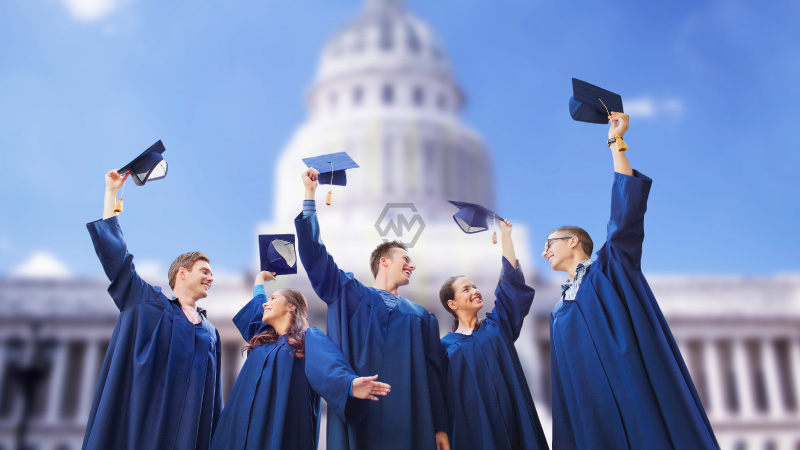As indicated by the Division of Schooling, the U.S. has of late accomplished its most noteworthy graduation rates for public secondary schools in the north of 10 years.
The government organization tracked down the U.S. normal changed partner graduation rate (ACGR) – an estimation presented in 2010 that alumni in something like four years contrasted with the quantity of 10th grades that started the “companion” (in addition to and less for moves, passings and dropouts) – for the 2019-20 school year was 87% for secondary school understudies.
US Achieved High Graduation Rates
Regardless of the pandemic’s effect on learning, rates kept on developing. This is reasonable because each state settled for what is the most convenient option by loosening up models for things like participation, testing, and credits. For instance, in New York, more than 70% of the class of 2021 got an exclusion from somewhere around one graduation prerequisite.
Even though graduation rates cross country are high, they truly do fluctuate from state to state. The Branch of Schooling says the rates range from 92% in West Virginia and Iowa to 73% in Washington D.C.
Be that as it may, states with higher rates don’t be guaranteed to convey superior training to their understudies. While West Virginia had probably the most noteworthy graduation rates, the most recent grades from the Public Appraisal of Instructive Advancement (NAEP) test show the state positioned 47th on the test.
Besides, these high graduation rates are not reflected in university enlistment. A Money Road Diary NORC survey found most Americans don’t think a professional education merits the expense. The survey found 56% think it is a poorly conceived notion, contrasted with 42% who accept it is a wise speculation.
- School enlistment has generally dove 15% over the past ten years.
- In the interim, individuals are chasing after different qualifications as a more affordable other option.
- As indicated by the Division of Work apprenticeships have risen 64%.
Trust in school is lower among those ages 18 to 34. This is the consequence of proceeding with a pattern, which shows certainty has gotten lower over the years for essentially every gathering whether it be men, ladies, and, surprisingly, those that have professional educations.
42% of individuals with professional educations said it was not worth the expense which is 10% higher than it has been throughout the past ten years.
There are many purposes behind the lower confidence in higher foundations of learning. Two of the greatest obstructions are understudy obligation which – has arrived at a record $1.7 trillion – and low graduation rates at four-year universities, which are around 60%.
A new report from Harvard Business Survey tracked down many organizations, particularly tech, that are eliminating degree prerequisites and on second thought zeroing in on abilities based employing.
The review saw as half of IBM’s U.S. employment opportunities don’t need a four-year degree.
In any case, this doesn’t mean a degree doesn’t accompany benefits. Information from the U.S. Department of Work Insights (BLS) shows that four-year certification holders, by and large, procure 84% more than individuals with simply a secondary school recognition.



